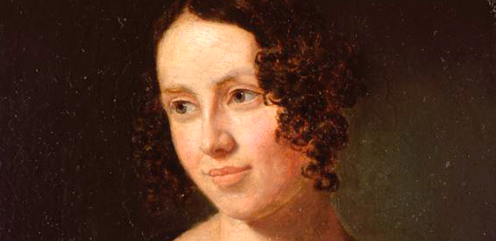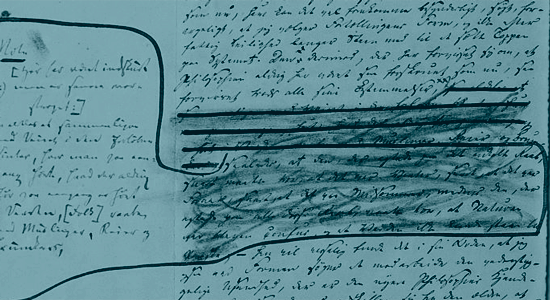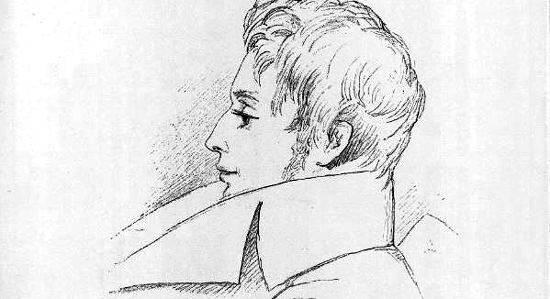A Dialogue between Worldviews
REGINE

ENGAGEMENT
”You, the Ruler of My Heart”
As a fresh theology graduate, Kierkegaard embarked on a trip in the summer of 1840 to Jutland on a kind of pilgrimage, with his father’s wind-blown hometown as the symbolic destination. When he returned, he became engaged on September 10 to a girl ten years his younger, Regine Olsen, who, like him, was the youngest of seven siblings.
The Power of Art
Regine not only stirred his sensual passions but also set such powerful artistic powers in motion that a dismayed Kierkegaard was forced to admit that he was not called to be a husband, but rather to be—Kierkegaard. He was thus compelled to break the engagement on October 12, 1841, which aroused general indignation and caused Regine great despair. This guilt-invoking episode had broad implications for the authorship. Regine never shows up under her proper name, but she is poetically present in the romantic conflicts that are played out with ingenious frequency over and over again throughout the authorship.
Silent Meetings
After their breakup, the former fiancées met each other strikingly often: sometimes within the walls of chilly and dimly-lit churches, sometimes out on the streets of Copenhagen, and sometimes on the paths along the old city ramparts. They passed by each other for a few intense seconds, without uttering a word, proving that platonic love can be wilder than fully consummated erotic love.
"Misfortune doesn’t lie in the fact that the lovers didn’t get to be with each other, but in the fact that they couldn’t understand each other." - (Philosophiske Smuler. Source: SKS.dk)
Kierkegaard made Regine his literary life companion and they can be included among other unfortunate lovers—Pyramus & Thisbe, Dante & Beatrice, Romeo & Julie, Kafka & Felice—who belong to each other forever because they were never together in temporality, but had to wait patiently for eternity.
”God Bless You”
In November 1847, Regine married Johan Frederik Schlegel, who was later appointed Governor of the Danish West Indies, where the couple resided from 1855 to 1860. On the day of their departure, Regine found Kierkegaard in the crowd and quietly said: “God bless you—I hope the best for you!” Kierkegaard froze, but managed to tip his hat as a greeting to his former love—for the last time ever. No one knows what the brilliant thinker and theologian was thinking during those blessed moments. Perhaps quite exceptionally he didn’t have any thoughts at all but just allowed himself to be blessed by the woman of his life.
"Beloved she was. My existence was to accentuate her life absolutely, my activity as an author could also be viewed as a monument to her praise and honor. I am taking her with me into history."
Caption:
In a letter to Regine on September 23, 1840, Kierkegaard sketched himself standing on the middle of Knippelsbro, one of the bridges that spans Copenhagen harbor. He is equipped with a giant telescope pointed in the direction of Trekroner, a small island fort, but thanks to some cleverly placed mirrors, he’s able to see Regine in her home on Børsgade on the opposite side of the bridge.


